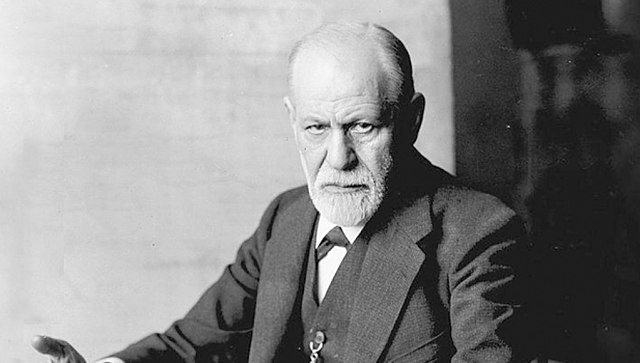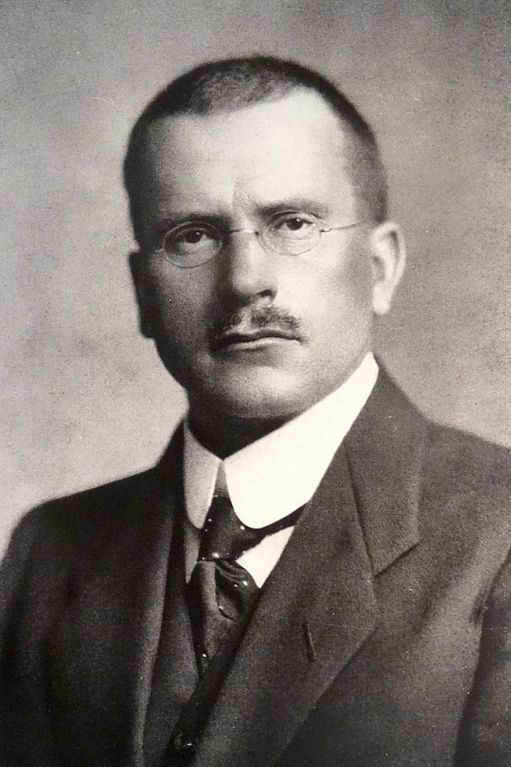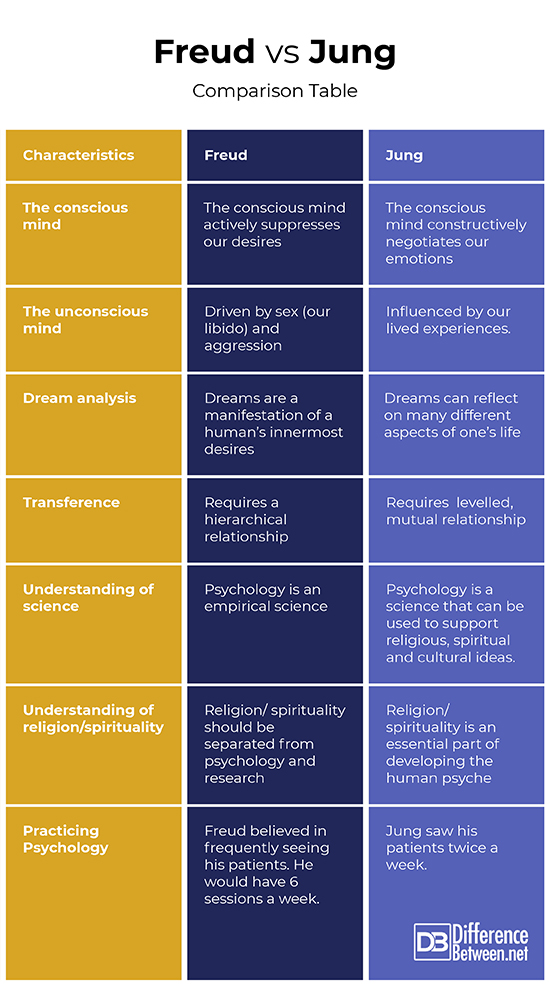Differences Between Jung and Freud
Sigmund Freud and Carl Jung are considered the founding fathers of psychoanalytical psychology. They have fundamentally shaped our understanding of modern psychology and mental illness. Nevertheless, they are renowned for having significantly different approaches to the discipline
Sigmund Freud (1856 -1939) was an Austrian neurologist – he studied medicine at the University of Vienna in 1881. Freud used his knowledge about medicine to conduct extensive psychological research throughout his career. In 1886 he worked at a specialist clinic for treating nervous system disorders. During this time, he developed his initial ideas surrounding psychoanalysis; Freud would encourage patients to share their deepest thoughts and emotions.
Carl Jung (1875- 1961) studied medicine at both the University of Basel (1900) and the University of Zürich (1902). He practiced as a psychiatrist and spent his early days at Burghölzli Asylum. While studying and diagnosing his patients he applied research methods such as association tests that were developed by his predecessors.

What is Freudian Theory ?
Freud was concerned with the unconscious mind and its connection to our suppressed thoughts, disturbing memories and primal human drives such as sex and aggression.
According to his theories, the human psyche is divided into the id, the ego and the super ego. The id is connected to our unconscious drives and the ego is linked to our conscious experiences. Lastly, the super ego mediates our behavior by balancing the impulses of the id and the ego. Moreover, he is specifically known for theorizing the Oedipus Complex.

What is Jungian Theory?
Jung contested Freud’s ideas – he acknowledged the unconscious mind, but, placed more emphasis on an individual’s lived experiences and future aspirations. He departs from Freudian theory by conceptualizing the idea of a collective consciousness.
Jung justified human behavior by exploring the sense of connectedness that we feel regarding our emotions and actions. Jung’s ideas were influenced by his extensive knowledge regarding philosophy, mythology and religion.
Similarities Between Jung and Freud
Freud and Jung were both interested in the unconscious mind. In 1906 they worked together as colleagues and started doing extensive research, particularly regarding dream studies. Freud believed that Jung had the potential to be his predecessor.
Major similarities between Jung and Freud:
- Focusing on the conscious and unconscious mind
- Dream analysis as a form of research methodology
- Repressed human emotions (complexes) influencing behavior
Differences Between Jung and Freud
Freud and Jung initially developed their theories together. However the two had some major disagreements that separated psychoanalysis into two schools of thought. Freud paid close attention to human behavior and repressed emotions. Conversely, Jung believed that the human psyche was more multifaceted.
Freud vs Jung Comparison Table

Understanding the Differences Between Jung and Freud
-
The Implications of a Dream
Jung and Freud developed a large sum of their research by studying dreams, particularly their own. Both researchers believed that dreams were an essential tool in terms of exploring the unconscious mind. Freud argued that dreams are a manifestation of a human’s innermost desires.
Contrastingly, during an unconscious sleep, these desires are revealed through dreams and are often linked to some kind of sexual desire. Thus, allowing for a greater understanding of a person’s thoughts and emotions.
-
The Role of Religion and Spirituality
Freud believed that religion should be separated from the empirical nature of research and psychology. He viewed religion as an escape from the harsh realities of the world. Additionally, Freud rejected the idea of paranormality, regardless of its presence in a variety of cultural beliefs.
Conversely, Jung took a more positive stance towards religion. His theories acknowledged religion as an essential part of individual development. It fosters communication and allows people to process their grievances. Jung connected his archetypal theories to a variety of religious symbols. Archetypes are the intrinsic universal understandings of the world that are held by all humans according to Jung.
-
Practicing Psychology
Freud believed in frequently seeing his patients. He would see his patients up to six times a week for approximately 45 minutes. Jung found this excessive and conducted approximately two sessions a week that were approximately an hour.
Jung’s practical methods have had a greater influence on the practices of modern psychologists. They are more feasible in terms of treating an individual who is functional in society
Furthermore, Freud centered a large sum of his research around the use of a couch. He used it as a tool for analyzing his patients. Freud believed that his patients were more likely to share their thoughts and emotions if they were comfortably, lying down and facing away from the psychologist.
On the other hand, Jung found value in face-to-face interactions. He didn’t find it necessary for patients to lie on a couch.
The two psychologists both utilized transference as a tool to treat patients. However, they used in different ways. Transference is the process of projecting feelings, desires and thoughts onto another person as a means of analyzing a situation. Freud believed that this technique can only be successful in a hierarchical relationship. He encouraged his patients to use transference in relation to role models and fantasies.
Jung challenged Freud’s thought’s on transference with non-traditionalist ideas. He viewed transference as opportunity for two people to understand one another by transferring their ideas in a collaborative way.
- Differences Between Sexual Orientation and Gender Identity - January 24, 2019
- Differences Between Intelligence and Wisdom - November 20, 2018
- Differences Between Jung and Freud - October 19, 2018
Search DifferenceBetween.net :
 Email This Post
: If you like this article or our site. Please spread the word. Share it with your friends/family.
Email This Post
: If you like this article or our site. Please spread the word. Share it with your friends/family.
1 Comment
Leave a Response
References :
[0]Image credit: https://upload.wikimedia.org/wikipedia/commons/thumb/5/50/A_file_photo_of_Sigmund_Freud.jpg/640px-A_file_photo_of_Sigmund_Freud.jpg
[1]Image credit: https://upload.wikimedia.org/wikipedia/commons/thumb/0/00/CGJung.jpg/511px-CGJung.jpg
[2]Glover, Edward. From Freud To Jung: A Comparative Study Of The Psychology Of The Unconscious (C. G. Jung Foundation Books) (C. G. Jung Foundation Books Series). Evanston: North Western University Press, 1991. Print.
[3]McGuire, William. The Freud/Jung Letters. London: Picador, 1979. Print.
[4]Robertson, Robin. Beginner's Guide to Jungian Psychology. 1st ed. Dublin: Gill & Macmillan, 1992. Print.
[5]Freud.org. "What Is Psychoanalysis? - The Ego, The Id And The Superego | Freud Museum London." .2018. Web. 25 Sept. 2018.


It’s good for the differences